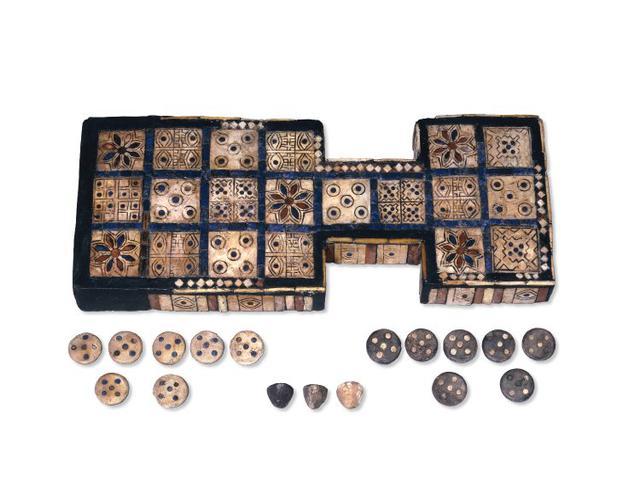The Royal Game of Ur

The Royal Game of Ur is a fascinating archaeological discovery that sheds light on the ancient pastimes of the people of Mesopotamia. Discovered by Sir Leonard Woolley in the 1920s in the royal tombs of Ur, these two game boards are believed to date back to the First Dynasty of Ur, before 2600 BC. The game, played by two people with black and white pieces resembling checkers or chess, also involved the use of three pyramidal dice. While the exact rules of the game remain a mystery, scholars have been able to reconstruct a possible gameplay scenario, suggesting it was a "racing" or "chase" game.
These intricately designed game boards, with inlaid inlays, are among the oldest examples of board games in history. Alongside other ancient games like the Egyptian Senet and the pieces found in Shahr-i Sokhta, the Royal Game of Ur provides valuable insights into the leisure activities and cultural practices of ancient civilizations. The popularity of the game extended beyond Mesopotamia, with boards discovered as far away as Crete and Sri Lanka, showcasing its widespread appeal and influence.
What sets the Royal Game of Ur apart is its spiritual significance in ancient society. As the game gained popularity, it was believed to hold mystical powers, offering insights into a player's future and serving as a medium for communication with deities and supernatural beings. This spiritual dimension added a layer of complexity and intrigue to the gameplay, elevating it from a mere pastime to a revered ritual.
Today, the Royal Game of Ur stands as a testament to the ingenuity and creativity of ancient civilizations. Its intricate design, symbolic significance, and historical importance make it a valuable artifact for understanding the cultural practices and beliefs of the people of Ur. Whether you're a history enthusiast, a board game aficionado, or simply curious about the ancient world, exploring the Royal Game of Ur offers a unique glimpse into the past and a chance to connect with the timeless allure of ancient games. Visit museums or historical sites where these artifacts are displayed to witness firsthand the legacy of this ancient game and its enduring impact on human history.
© ChatGPT 3.5